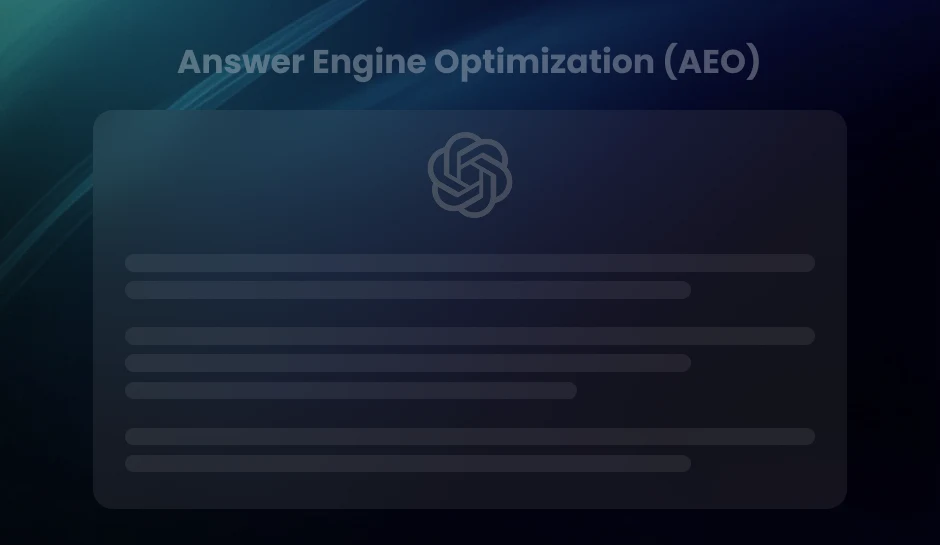
Mastering Google Analytics 4 Tools: The New Era of Data-Driven Marketing
Google Analytics 4 isn’t just a new version; it’s a whole new approach to digital measurement. From tracking behavior across devices to predicting user actions with machine learning, GA4 equips marketers with the tools to build smarter, more targeted campaigns. Explore how GA4 changes the game for modern data-driven marketing.
Since Google sunset Universal Analytics in July 2023, Google Analytics 4 (GA4) has become the new standard for website and app measurement. This change isn’t just an upgrade-it’s a fundamental shift. GA4 introduces event-based tracking, cross-platform data integration, and predictive analytics, replacing sessions and pageviews with a more nuanced understanding of user behavior.
With reduced access to third-party data and increasing privacy regulations, directly observing how users interact across digital touchpoints has never been more critical. GA4 meets this demand head-on, offering marketers and analysts the tools to measure granular interactions, map complete customer journeys, and optimize campaigns with real-time insights.
In this guide, you’ll explore the essential Google Analytics 4 tools that shape strategy in today’s marketing landscape. From flexible event tracking and robust audience segmentation to advanced explorations, BigQuery integration, and machine learning-powered insights-each feature unlocks new possibilities for performance-driven decision making.
Tracking Behavior, Not Just Sessions: GA4’s Shift to User-Centric Measurement
Understanding User Behavior Across Devices and Platforms
Google Analytics 4 (GA4) replaces the obsolete session-based model of Universal Analytics with a holistic approach to tracking users. This shift enables businesses to track a single user’s interactions across devices, from mobile apps to desktop sites, and tie these touchpoints to a single, coherent user journey.
Instead of relying on fragmented views, such as device categories or sessions, GA4 aggregates data through user-centric events. A user who visits on mobile in the morning and then converts on desktop in the evening is no longer registered as two unrelated sessions. With GA4’s unified view, all actions map back to a single user profile, eliminating data silos across platforms.
This model transforms how marketers evaluate campaigns. Cross-device return rates, assisted conversions, and long-term behavior can now be directly connected to individual users, offering clarity that is absent in session-based systems.
Unique User IDs and Smart Modeling
When websites and apps implement User-ID, GA4 links activity across authenticated sessions. For example, if someone logs in on multiple devices, GA4 associates their behavior using a consistent identifier, giving brands an unbroken perspective on multi-platform engagement.
For unauthenticated users, Google applies machine learning models and probabilistic matching. These systems infer connections across sessions by analyzing signals such as device type, geography, browser settings, and behavioral patterns. According to Google’s developer documentation, GA4’s modeling can reconstruct up to 70% of cross-device behavior that would otherwise be lost when cookies or login states aren’t available.
This hybrid approach, which is deterministic when possible and probabilistic when not, allows brands to measure users as unified individuals, rather than disjointed device instances.
Predicting Value: Lifetime and Churn Metrics
GA4 includes out-of-the-box support for lifetime value (LTV) calculations and churn analysis. LTV can be evaluated on dimensions like campaign source, content theme, or audience segment, revealing which acquisition channels bring in the highest-value users over time, not just immediate conversions.
Churn metrics, on the other hand, expose where and when users drop off. By comparing returning vs. non-returning users month over month, businesses gain insight into which pages, events, or product experiences correlate with disengagement. GA4 surfaces these user retention metrics automatically in the Analysis Hub, and they can be refined via filters to spotlight high-risk user segments.
- LTV by medium: Quantify ROI across channels like email, paid search, or referrals.
- Churn funnel: Identify when users exit the journey – right after onboarding? Post-first purchase?
- User stickiness: Track DAU/WAU/MAU ratios to monitor ongoing engagement.
By centering analytics on individuals, rather than just sessions or devices, GA4 enables a deeper measurement of behavior, loyalty, and customer value. This redesign equips teams to optimize for long-term relationships, rather than just one-time conversions.
Pro Tip – Enable and consistently use User-ID tracking wherever possible, especially on login-gated experiences. This creates a persistent identifier that vastly improves cross-device attribution and enhances the accuracy of LTV and churn analysis. For users who don’t log in, activate Google Signals to allow GA4’s machine learning to intelligently stitch together anonymous user journeys for more complete behavior modeling.
Data Streams: Integrating Web and App Data Seamlessly
What Are Data Streams in GA4?
In Google Analytics 4, a data stream represents a flow of data from a specific source, such as a website, iOS app, or Android app, into a single GA4 property. Unlike Universal Analytics, which required separate properties for web and app tracking, GA4 allows all platform data to exist within a single property using multiple streams. This architecture eliminates the platform silo and supports unified reporting across digital touchpoints.
Each data stream collects events and user interaction data independently, but once connected to a single GA4 property, they contribute to a cohesive user dataset. This structure enables marketers and analysts to map complex user journeys that span devices and sessions.
Setting Up Web and App Streams from a Single Property
The process of establishing data streams begins within the GA4 property settings. You can create up to three distinct types of streams:
- Web Stream: Typically linked to a website, it uses a Measurement ID (starting with G-) and leverages gtag.js or Google Tag Manager for implementation.
- iOS App Stream: Requires implementation with the Firebase SDK for iOS. During setup, the app’s bundle ID and App Store link must be specified.
- Android App Stream: This also utilizes the Firebase SDK, and setup involves linking with your Android package name and providing a SHA-1 certificate fingerprint.
Each stream has configurable settings for data collection, including the activation of enhanced measurement and user ID features. After setup, data begins flowing into the GA4 property in real-time, segmented by stream source but analyzed together.
Unifying Reporting Across Platforms for Holistic Analysis
Data streams unlock comprehensive reporting capabilities in Google Analytics 4 (GA4). Since events from all platforms funnel into a single property, user activity across web and mobile platforms becomes traceable under one umbrella. This allows for:
- Cross-platform funnel analysis: Observe how users jump from mobile app sessions to web checkouts.
- Consistent event tracking: Define events once and observe their behavior across all digital assets.
- Unified audiences: Build audience segments based on interactions across multiple platforms without duplication.
With a shared user ID or Google signals enabled, GA4 can stitch together anonymized sessions, enabling a single-user view. This directly supports more accurate attribution modeling and campaign performance tracking in environments where customers frequently switch between devices.
Pro Tip – When setting up multiple data streams, standardize your event naming conventions across web and app platforms from the start. This ensures clean, unified reporting and avoids confusion in Explorations, funnels, and audience segmentation. Consistency across streams also simplifies cross-platform analysis, making it easier to apply filters or build multi-platform audiences without additional mapping or reprocessing.
Enhanced Measurement Features: Activate Tracking Without Writing a Single Line of Code
Auto-Tracking Built for Modern Web and App Experiences
Google Analytics 4 introduces a core upgrade called Enhanced Measurement, which auto-tracks user interactions without the need for manual tagging or intervention. This feature captures key engagement events by default, events that previously required custom setup in Universal Analytics.
Once enabled, GA4 begins logging the following user actions automatically:
- Scroll tracking: Every scroll reaching 90% of a page’s height triggers an event.
- Outbound click detection: When users click links that lead to external domains, GA4 labels and logs them.
- Site search tracking: GA4 captures internal search terms typed into site search boxes, including query parameters.
- Video engagement (via embedded YouTube players): Events include start, progress (10%, 25%, 50%, 75%, 90%), and complete.
- File downloads: Clicks on downloadable file types, such as PDFs and ZIP files, are automatically recorded.
- Page views: Tracked by default, now supplemented with views loaded dynamically via JavaScript (thanks to enhanced tracking logic).
One-Click Activation Inside the GA4 Interface
There’s no requirement to modify your website’s code or deploy new tags through Google Tag Manager. From the GA4 property settings, navigate to Admin > Data Streams, select your desired web stream, and toggle Enhanced Measurement options on or off with a single click. The interface allows customization to disable specific features without affecting the others.
This activation process significantly reduces deployment time, especially for marketing and product teams that lack developer resources.
Use Cases for Marketing and UX Optimization
- Marketing teams monitor outbound clicks to quantify the traffic sent to partners or campaigns hosted off-site.
- Content strategists analyze scroll depth to assess whether users are engaging with long-form pieces or abandoning mid-article.
- UX researchers use site search terms as direct insight into user intent, refining navigation structures and search logic accordingly.
- Video marketers track how far into embedded videos users watch and then tie that data to retention analytics.
None of this requires event setup or technical intervention. Just toggle on what you need, and the data begins flowing into reports immediately.
Conversion Tracking: Tracking What Matters
Define Conversions by What Drives Value
GA4 does not predefine conversions; instead, it gives full control over what counts. Any tracked event can be flagged as a conversion, turning routine interactions into key performance indicators. This design breaks away from rigid models, allowing the tracking architecture to adapt to business goals, whether that’s completing a checkout, making a phone call, or successfully downloading a file.
To designate a conversion in GA4:
- Navigate to the Events section in the platform.
- Locate the relevant event, which was either created manually or through Enhanced Measurement.
- Toggle the event to mark it as a conversion.
This change triggers GA4 to record that interaction as a conversion going forward, applying it consistently across reports and funnel visualizations.
Track Key On-Site Behaviors with Precision
Each purchase, form submission, or PDF download can be tracked as an individual event and elevated to conversion status. For example, e-commerce owners can use the predefined purchase event, while lead-based businesses might create a custom generate_lead event tied to a successful form submission. Downloads such as whitepapers or case studies often trigger a file_download event, which can also be marked accordingly.
GA4 also supports parameter-rich events. A single form submission event could include additional data like:
- form_id: Identify the specific form submitted
- lead_type: Tagging high vs. low quality inquiries
- page_location: Reveal where the conversion occurred
With this depth, marketers can evaluate not only whether users convert, but also how, where, and under what conditions.
Link Conversion Data to Real Revenue
Tracking conversions isn’t just about counting actions-it’s about proving value. By combining conversion events with key metrics such as purchase revenue, cost per acquisition (CPA), or return on ad spend (ROAS), marketers gain a quantitative understanding of success. For example, integrating Google Ads campaigns with GA4 surfaces which keywords drive revenue-producing conversions, not just clicks.
Use the Advertising %u2192 Conversion Paths and Advertising %u2192 Model Comparison reports to analyze how various touchpoints contribute to final conversions. Select from data-driven, last-click, linear, or position-based attribution models to assess ROI from multiple perspectives.
By precisely connecting site behavior to performance metrics, GA4 enables marketers to move past volume and optimize for business results.
Pro Tip – Don’t just mark conversions; enrich them with custom parameters. When you assign values like lead_type, form_id, or product_category to your conversion events, you unlock deeper insights into what types of interactions drive the most revenue or qualified leads. This added context helps you prioritize high-impact actions, refine audience targeting, and optimize quality campaigns, not just quantity.
Custom Dimensions and Metrics: Tailoring Insights
Understanding the Core Difference
Google Analytics 4 distinguishes between dimensions and metrics at a foundational level. A dimension describes attributes of your data, such as device type, traffic source, or user city. Meanwhile, a metric quantifies aspects of that data, like the number of sessions, average engagement time, or revenue.
For example, if you’re analyzing traffic by city, ‘City’ is the dimension and ‘Sessions’ is the metric. Dimensions provide the context; metrics supply the value.
Creating Custom Events and Parameters
Custom dimensions and metrics in GA4 rely heavily on custom events and user-defined parameters. Here’s how it works:
- You begin by creating an event either through code (e.g., gtag.js or Firebase SDK) or via Google Tag Manager.
- Within that event, include one or more custom parameters, key-value pairs that define the specific data you want to collect.
- In GA4’s admin panel, register those custom parameters as either user-scoped or event-scoped custom dimensions or metrics.
GA4 supports up to 50 custom dimensions and 50 custom metrics per property. Scope determines how your data is stored and reported. For example, user-scoped dimensions retain their values across multiple sessions, while event-scoped ones are tied to a single interaction.
Real-World Applications: Use-Cases That Deliver Value
- Membership Tiers: Track user-type performance (e.g., Free, Silver, Gold) by sending a custom parameter with each login or session-start event. Define a user-scoped custom dimension membership_tier to break down revenue by tier.
- Content Types: For publishers and ecommerce platforms alike, tagging pages with a content_category Let’s marketers analyze how various content types (e.g., blog posts, case studies, product pages) influence engagement, scroll depth, and conversion.
- Campaign Source Details: GA4’s native source/medium attribution lacks granularity in many custom campaigns. Adding URL parameters such as campaign_region or ad_format can fill this gap. Register them as custom dimensions, then evaluate performance differences across creative formats or geos.
Consistent use of custom dimensions and metrics provides a high-resolution view of user behavior. Instead of relying solely on standard analytics, teams can construct tailored models based on unique business language and objectives.
Streamline Implementation: Integrating Google Analytics 4 with Google Tag Manager
Set Up GA4 in Minutes Using Google Tag Manager
Deploying Google Analytics 4 through Google Tag Manager (GTM) eliminates the need for manual code edits on your website. By using GTM’s web-based interface, you can install a GA4 configuration tag and start collecting data efficiently. The process involves:
- Creating a GA4 property within Google Analytics.
- Inserting a new GA4 Configuration tag in GTM using the Measurement ID from GA4.
- Assigning the tag to trigger on all pages, or specific pages as needed.
This setup immediately activates the core data stream from your site to Google Analytics 4 (GA4). Tag firing can be precisely controlled using built-in or custom triggers in GTM, allowing full automation of the deployment process.
Customize Events Without Writing Code
GA4’s event-based model empowers marketers to track granular user interactions without relying on developers. Inside GTM, you can define custom event tags to track clicks, form submissions, video engagement, scroll depth, and more. Use GTM’s built-in variables such as Click Text, Page URL, and Form ID to set granular conditions for when events should fire.
For example, you can configure an event to trigger when a button with specific text is clicked, or when a visitor scrolls 90% of a page. Once these custom events are built in GTM, they automatically appear in GA4’s Event section, ready for use in conversions or reporting views.
Gain Speed and Precision in Marketing Analytics
GTM decouples analytics deployment from development cycles, allowing rapid testing and iteration. Campaign tags, remarketing pixels, and event tracking can all be managed from a single dashboard, eliminating the need to push new code to production. This agility accelerates marketing deployment by removing reliance on developers for every tracking update.
And when it comes to data quality, GTM improves accuracy through version control, robust debugging tools like Preview Mode, and the ability to instantly roll back erroneous changes. By maintaining a centralized tag management system, teams reduce redundancy and ensure consistency across tools and platforms.
How have you used Google Tag Manager to streamline your analytics? Have specific events unlocked new insights into user behavior? Start exploring the flexibility of GTM to bring your GA4 implementation to life.
Pro Tip – Use GTM’s built-in Preview Mode to test every GA4 event before publishing. This helps validate that your tags fire under the right conditions and ensures data accuracy without cluttering your reports. Combine this with naming conventions and version control in GTM to streamline collaboration and avoid misfiring events, especially when multiple teams manage tags.
Anticipating Behavior with Predictive Metrics and Machine Learning in GA4
Leverage Google’s AI to Forecast User Intent
Google Analytics 4 integrates machine learning directly into its reporting infrastructure, making predictive insights accessible without custom modeling. It doesn’t just show what happened; it provides a statistically backed glimpse into what is likely to happen next. By analyzing large pools of event-based data, GA4 applies behavior modeling algorithms to surface actionable predictions.
Using historical patterns and current user activity, GA4 can calculate probabilities around specific outcomes. These predictions create sharper marketing strategies, especially when combined with remarketing or engagement tactics.
Key Predictive Metrics in GA4
- Purchase Probability: This metric calculates the likelihood that a user who was active in the last 28 days will purchase in the next 7 days. GA4 considers past conversions, engagement levels, and interaction frequency.
- Churn Probability: Focused on retention, this score predicts the chance that an active user will not return in the next 7 days. It helps optimize retention campaigns by targeting users at risk of becoming inactive.
Both metrics require a minimum data threshold to activate, typically 1,000 returning users and sufficient conversion data within a 28-day window. When in place, these metrics update dynamically and power predictive audiences.
Applying Predictive Insights to Campaigns
Real-world usage shines when predictive metrics feed directly into audience creation. For example, an audience with a high purchase probability (above a predetermined threshold) can be synced to Google Ads for dynamic remarketing. This isolates users most likely to convert, lowering acquisition costs and improving ROAS.
Conversely, identifying users with high churn probability offers an opportunity to retain them through tailored messaging, such as push notifications, email re-engagement, or enhanced user experience elements. The impact multiplies when campaigns run in real time, informed by live GA4 predictions instead of static user segments.
With predictive metrics, GA4 not only analyzes behavior but also anticipates it, providing marketers with a proactive edge that traditional analytics platforms lack. What’s your next move with this data at your fingertips?
Pro Tip – Once predictive audiences are generated in GA4, link them to Google Ads for automated targeting. This lets you dynamically serve ads to users most likely to convert or churn, based on real-time engagement data, maximizing return while minimizing wasted ad spend.
Reporting and Explorations in Google Analytics 4: Beyond Standard Reports
Flexible and Unified Reporting Interface
Google Analytics 4 transitions away from fixed dashboards and introduces a streamlined reporting structure centered on events and user interactions. Rather than relying on a large volume of pre-defined reports, GA4 offers a compact set of default reports that draw directly from custom and automatically collected events. These reports provide a high-level overview of acquisition, engagement, monetization, and retention.
The Reports section categorizes insights by lifecycle stage and user demographics. Interactive filters, date ranges, and comparative views let users adjust the presentation of metrics without needing to build custom reports from scratch. For instance, modifying the acquisition report to compare traffic from different campaigns over a custom time requires just a few clicks.
Explorations: Deep Dive into Behavioral Patterns
The Explorations workspace offers a powerful environment for conducting ad hoc analysis. It goes significantly beyond standard reporting by enabling drag-and-drop functionality, unlimited segments, and advanced user pathing tools. Data in Explorations is unsampled, allowing for fine-grained insights across large datasets.
Users can select from multiple visualization types including tables, pie charts, line graphs, scatter plots, and geo maps. In contrast to the static layout of standard reports, Explorations enables the dynamic manipulation of variables, including dimensions, metrics, segments, and filters. For example, creating a custom tab that visualizes revenue by user first touch source, broken down by device category, takes under a minute.
Exploration Templates: Streamlined Analysis Structures
GA4 provides several built-in Exploration templates, each designed to answer a specific analytical question with minimal setup. These pre-structured templates accelerate analysis by guiding users through key patterns in their data.
- Funnel Analysis: Visualizes users’ progression through a series of predefined steps. Supports both open and closed funnels, measuring drop-off and conversion rates between steps. Useful for optimizing checkout flows or tracking lead generation.
- Path Exploration: Maps the sequence of user actions, either forward from a starting point or backward from a known outcome. Marketers use it to trace events leading up to conversions or identify common exit paths.
- Segment Overlap: Compares how different segments intersect. For example, identifying users who made a purchase, returned within 7 days, and viewed a specific product category. The visual Venn diagram makes audience overlap instantly visible.
These templates function as launchpads. Once generated, users can tweak any parameter, adding filters, expanding time ranges, redefining segments, resulting in custom explorations tailored to specific hypotheses.
From Exploration to Action
Insights uncovered in Explorations don’t remain siloed. Users can create new audiences directly from Exploration segments, build predictive audiences from behaviors surfaced in funnels, or export findings to BigQuery for broader data integration. This seamless flow from discovery to implementation marks a critical shift in GA4’s analytical philosophy.
Pro Tip – Use Explorations as your testing ground for hypotheses before building long-term dashboards. Whether you’re investigating a sudden traffic spike or optimizing a funnel, Explorations let you isolate variables, create segments on the fly, and pivot between visualizations, without touching your production reports.
Master GA4 Tools and Take Control of Your Analytics Strategy
Google Analytics 4 completely reimagines the traditional analytics model. It prioritizes events, not sessions. It measures user paths, not just pageviews. It connects seamlessly across platforms and devices, offering clarity on complex user journeys. For marketing teams, product managers, developers, and analysts, it delivers a granular, customizable, and forward-looking framework built for long-term growth.
What the GA4 Toolkit Brings to the Table
- Event-Based Tracking: Move beyond rigid session metrics and monitor every interaction, from scrolls to clicks, form completions to file downloads.
- Cross-Platform Integration: Analyze web and mobile app performance in one place, unified through data streams and identity stitching.
- Predictive and Custom Dimensions: Use machine learning to anticipate actions, then define your metrics to capture what GA4 doesn’t track out of the box.
- Advanced Reporting: Employ Explorations, funnel reports, and pathing analysis to break down behavior and performance with surgical precision.
- BigQuery Integration: Uncover deeper insights and execute complex queries with first-party raw data at your fingertips.
Who Needs to Master GA4; and Why
Marketers seeking attribution clarity, SEOs aiming to tie engagement to keywords, analysts deciphering multi-touch funnels, and developers ensuring comprehensive event tracking all benefit from Google Analytics 4 (GA4). Anyone relying on digital data to make decisions will find in GA4 a toolkit designed not just to measure, but to solve.
Unlike Universal Analytics, which rewards high-level overviews and default dashboards, GA4 demands a strategic approach. It requires deliberate configuration and forces users to define what success means in terms that can be measured. Those who take the time to master it gain an undeniable competitive advantage in targeting, content strategy, and product development.
Key Takeaways
- GA4 replaces session-based analytics with a robust event-driven model that tracks user behavior across platforms and devices. This allows marketers to map comprehensive customer journeys and gain clarity on how users truly engage over time, regardless of device or session boundaries.
- With Enhanced Measurement and Google Tag Manager integration, even non-technical teams can track meaningful user actions such as scrolls, clicks, video views, and downloads, without needing to touch code. GA4’s flexibility enables faster experimentation and more agile, data-driven decision-making.
- GA4’s built-in machine learning enables predictions like purchase or churn probability, while customizable dimensions and metrics tailor the platform to your unique business goals. These tools shift analytics from reactive reporting to proactive strategy.
- Through data streams and Explorations, GA4 eliminates data silos and makes cross-platform analysis seamless. Marketers can analyze complete funnel paths, build granular audiences, and optimize campaigns based on actual user behavior, not assumptions.
Still Have Questions? Get personalized assistance comprehending and using GA4 Analytics tools. Email us at info@diggrowth.com to learn more.
Ready to get started?
Increase your marketing ROI by 30% with custom dashboards & reports that present a clear picture of marketing effectiveness
Start Free Trial
Experience Premium Marketing Analytics At Budget-Friendly Pricing.

Learn how you can accurately measure return on marketing investment.
Additional Resources
Don’t Let AI Break Your Brand: What Every CMO Should Know
AI isn’t just another marketing tool. It’s changing...
Read full post postFrom Demos to Deployment: Why MCP Is the Foundation of Agentic AI
A quiet revolution is unfolding in AI. And...
Read full post postAnswer Engine Optimization (AEO): The New Frontier of SEO in 2025
As digital experiences continue to evolve, so does...
Read full post postFAQs
Google Analytics 4 (GA4) shifts from session-based to event-based tracking, focusing on individual user actions rather than grouped sessions. This enables more flexible and detailed measurement across various platforms, including websites, iOS, and Android apps, all within a single property. GA4 also integrates predictive analytics and enhanced privacy compliance, making it more adaptable to today’s multi-device, privacy-conscious landscape.
No, many of GA4's features, like Enhanced Measurement and Google Tag Manager integration, are designed to work with minimal or no coding. Marketers can track key user behaviors such as scrolls, outbound clicks, and video engagement with simple toggles. For more advanced implementations, using Google Tag Manager enables customization without requiring changes to your website code.
GA4 uses a unified property model that combines data from web and app sources via data streams. With User-ID implementation or Google Signals, it can stitch together user activity across multiple devices, providing a single, coherent view of user journeys. Even without logins, GA4’s machine learning models help infer user behavior across devices.
Predictive metrics, such as Purchase Probability and Churn Probability, leverage machine learning to forecast user behavior based on historical engagement. These metrics enable marketers to identify high-value or at-risk users and drive automated audience targeting. For example, you can retarget users likely to purchase soon or re-engage those at risk of churn with personalized campaigns.
Absolutely. GA4 allows you to define any user interaction as a conversion and link it to revenue metrics like ROAS (Return on Ad Spend) or LTV (Lifetime Value). With custom events, parameters, and attribution modeling, you can trace how users convert, which campaigns drove them, and what content or features influenced their decision—all in one place.
 Rahul Sachdeva
Rahul Sachdeva  Arpit Srivastava
Arpit Srivastava 

